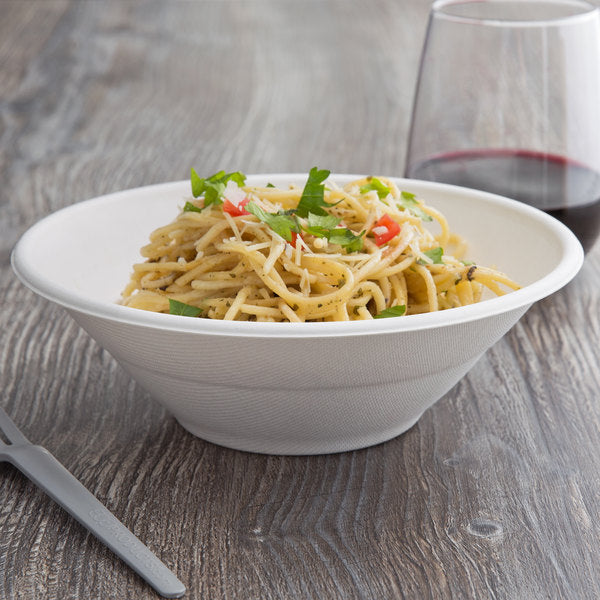Salsa food is one of Latin America’s most colorful culinary exports — bold, tangy, and endlessly versatile. Whether spooned over tacos, served with grilled meats, or used as a dip, salsa brings life to every dish.
In this comprehensive guide, you’ll explore the origins of salsa food, its key characteristics, popular types, and modern culinary applications. Perfect for chefs, food manufacturers, or home cooks, this article will deepen your understanding of how salsa food enhances both flavor and presentation.
- Understanding Differences Between Pizza Sauce vs Pasta Sauce
- Pasta Sauces: From Classic Italian Varieties to Regional Specialties
- How to Make Tomato Chutney? How Long Does Tomato Chutney Last?
What Is Salsa Food?
Salsa food is a broad term that refers to sauce-style condiments made primarily from fresh vegetables, fruits, and spices. Originating in Mexico, salsa has evolved throughout Latin America into a diverse range of preparations from chunky tomato blends to smooth avocado-based dips.
At its core, salsa food combines tomatoes, peppers, onions, and herbs to create a balance of acidity, sweetness, and heat. The term “salsa” literally means “sauce,” but it’s far more than that: salsa food reflects cultural identity, local agriculture, and regional creativity.
Key Characters of Salsa Food
All authentic salsa foods share a few defining qualities:
- Freshness First
The best salsa food uses fresh, seasonal produce tomatoes, onions, cilantro, chilies, and lime. The ingredients are rarely over-processed. - Complex Flavor Layers
Salsa food balances tangy, spicy, and savory notes. Depending on ingredients, it can even include sweet or smoky tones. - Regional Expression
Salsa varies widely by region. Mexican salsas use roasted chilies and tomatillos, while Peruvian or Argentine salsas often include vinegar, oil, or tropical fruit. - Versatility
From tacos to grilled salmon, salsa food enhances countless dishes. Its adaptable profile makes it a staple in global fusion cooking. - Cultural Importance
Beyond taste, salsa food represents heritage and celebration. It’s an essential element of gatherings, street food culture, and festive cuisine.

Flavor Profiles of Salsa
While salsa recipes can vary widely, they typically share a harmonious blend of flavors:
- Tangy: Tomatoes, citrus fruits (like limes or oranges), and vinegars (such as white vinegar or apple cider vinegar) provide a bright, acidic note.
- Spicy: Chili peppers, ranging from mild jalapeños to fiery habaneros, add heat and intensity. The choice of chili pepper often determines the overall spiciness of the salsa.
- Savory: Onions, garlic, and cilantro contribute depth and complexity. These ingredients provide a savory base that balances the tangy and spicy elements.
- Fruity: Some salsas incorporate tropical fruits like mangoes, pineapples, or papayas for sweetness and a touch of exoticism. These fruits can add a contrasting flavor profile and a more nuanced taste experience.
Popular Types of Salsa Food
Salsa comes in many forms fresh, roasted, green, red, smooth, chunky, mild, or blazing hot. Here are the most popular types you’ll find across Latin America and modern kitchens.
Pico de Gallo: The Classic Fresh Salsa
- Also known as: Salsa Fresca or Salsa Cruda
Texture: Chunky
Heat Level: Mild to Medium - Ingredients:
Ripe tomatoes, white onions, chopped jalapeños or serranos, fresh cilantro, lime juice, and salt. - Flavor Profile:
Bright, refreshing, and crisp the purest expression of salsa. - Best Used For:
Tacos, nachos, grilled meats, or as a topping for eggs. - Chef Tip:
Use vine-ripened tomatoes and freshly squeezed lime juice for the most vibrant flavor.
 Salsa Taquera (Taco Salsa)
Salsa Taquera (Taco Salsa)
- Texture: Thick and rustic
Heat Level: Medium to Hot - Ingredients:
Roasted tomatoes, onions, garlic, jalapeños or serranos, cumin, and oregano. - Flavor Profile:
Smoky, spicy, and deeply savory, the ultimate taco companion. - Best Used For:
Tacos al pastor, carnitas, and burritos. - Pro Tip:
Roasting the ingredients intensifies flavor and gives the salsa its signature depth.
 Salsa Roja: The Versatile Red Salsa
Salsa Roja: The Versatile Red Salsa
- Texture: Smooth or slightly chunky
Heat Level: Medium - Ingredients:
Tomatoes, dried chiles (ancho, guajillo, or pasilla), onions, garlic, and cilantro. - Flavor Profile:
Smoky, spicy, and earthy perfect for layering flavor into Mexican dishes. - Culinary Uses:
As a base for enchiladas, simmered sauces, or a dip for tortilla chips.
Related read: Understanding Differences Between Pizza Sauce vs Pasta Sauce learn how tomato-based sauces vary across cuisines.
 Salsa Verde: The Green and Tangy Salsa
Salsa Verde: The Green and Tangy Salsa
- Texture: Smooth
Heat Level: Mild to Medium - Ingredients:
Tomatillos (green husked tomatoes), serrano or jalapeño peppers, garlic, onion, and cilantro. - Flavor Profile:
Tangy and herbal with a subtle smoky undertone from roasted tomatillos. - Best Used For:
Grilled fish, chicken, tacos, or chilaquiles. - Chef Tip:
Blend roasted tomatillos for depth, or use raw ones for a fresher, tarter version.
 Salsa de Aguacate (Guacamole): The Creamy Dip
Salsa de Aguacate (Guacamole): The Creamy Dip
- Texture: Creamy
Heat Level: Mild - Ingredients:
Ripe avocados, lime juice, onions, cilantro, and salt. - Flavor Profile:
Smooth, rich, and cooling balances spicy dishes beautifully. - Best Used For:
Nachos, tacos, salads, and as a dip for tortilla chips.
See also: Pasta Sauces: From Classic Italian Varieties to Regional Specialties another deep dive into sauce textures and pairings.
 Salsa Criolla: The South American Salsa
Salsa Criolla: The South American Salsa
- Origin: Peru, Argentina, Uruguay
Texture: Crunchy and fresh
Heat Level: Mild - Ingredients:
Red onions, tomatoes, chili peppers, cilantro, vinegar or lime juice, and oil. - Flavor Profile:
Sweet, tangy, and refreshing a perfect counterbalance to grilled meats. - Best Used For:
Steak, fish, or empanadas. - Chef Tip:
Let it marinate for 15–30 minutes before serving to soften the onions and meld flavors.

Culinary Uses and Applications of Salsa
Salsa’s bold flavors and adaptable nature make it a staple in many kitchens. Here are some of the most common culinary uses and applications of salsa:
As a Condiment
- Dipping: Salsa is a classic dip for tortilla chips, vegetables, and even meats.
- Topping: It can be added to tacos, burritos, enchiladas, and other dishes for an extra burst of flavor.
- Marinades: Salsa can be used to marinate meats, adding both flavor and tenderness.
As an Ingredient
- Soups and Stews: Salsa can add depth and complexity to soups and stews, enhancing their overall flavor profile.
- Sauces: It can be used as a base for other sauces, such as salsa verde or salsa ranchera.
- Rice and Grains: Salsa can be incorporated into rice or other grains to add a flavorful kick.
As a Flavor Enhancer
- Eggs: Salsa can be served with scrambled eggs, huevos rancheros, or omelets for a flavorful twist.
- Seafood: It pairs well with grilled or grilled seafood, adding a tangy and spicy element.
- Grilled Meats: Salsa can be used as a marinade or served alongside grilled meats for a delicious accompaniment.
Regional Variations
The use of salsa can vary depending on the region. For example:
- Mexican cuisine: Salsa is widely used in various dishes, from tacos and enchiladas to soups and stews.
- Central American cuisine: Salsa is often served as a condiment or used in dishes like pupusas and tamales.
- South American cuisine: Salsa may be used in dishes like ceviche or as a marinade for grilled meats.
Related article: How to Make Tomato Chutney? How Long Does Tomato Chutney Last?
FAQs About Salsa Food
What does salsa food mean?
Salsa food refers to sauces made from tomatoes, peppers, onions, and herbs used as dips, toppings, or cooking bases.
Is salsa food always spicy?
No. Heat varies depending on chili type; mild versions use fewer or no chilies.
How long can salsa food last?
Fresh salsa lasts up to 5 days; cooked ones up to 10 days in the fridge.
Can salsa food be frozen?
Yes, but texture may change slightly upon thawing.
Which salsa food is mildest?
Salsa de Aguacate and Pico de Gallo are generally mild.
What are the healthiest salsa foods?
Fresh salsas made with raw vegetables and minimal salt or oil.
How can I make salsa food less spicy?
Remove chili seeds or add extra tomato or fruit to balance.
Can salsa food be used for cooking?
Absolutely, it enhances soups, stews, pasta, and rice dishes.
Conclusion
Salsa food is more than a condiment, it’s a story of Latin flavor, creativity, and connection. From Salsa Roja’s smoky spice to Mango Salsa’s tropical sweetness, each variation brings something special to the table.
Whether you’re a chef experimenting with global fusion cuisine or a restaurant owner creating signature sauces, salsa food delivers freshness and excitement in every bite.
Ready to serve your own salsa creation sustainably?
Get sample now of eco-friendly containers and packaging at Kimecopak.ca.







